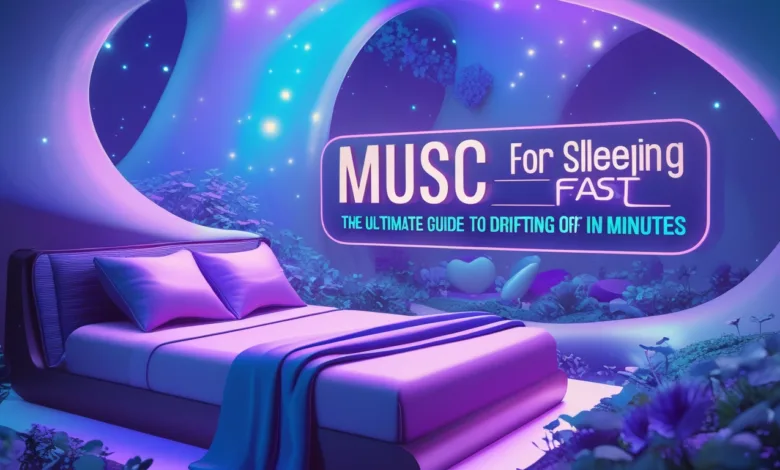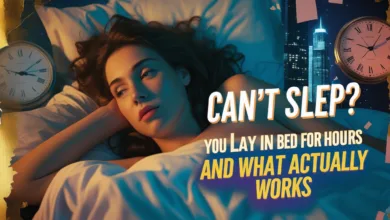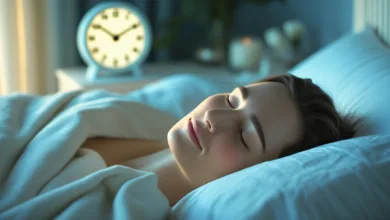Music for Sleeping Fall Asleep Fast: The Ultimate Guide to Drifting Off in Minutes

Tossing and turning at night? Can’t seem to shut off your racing mind? You’re not alone—and the solution might be simpler than you think. The right music for sleeping can help you fall asleep fast, transforming restless nights into peaceful slumber.
Why Your Brain Craves Music at Bedtime
Ever wonder why lullabies work on babies? Well, turns out our adult brains aren’t so different! When you’re lying there, staring at the ceiling, your mind’s probably running a marathon of thoughts—tomorrow’s to-do list, that awkward thing you said three years ago, whether you locked the front door. Sound familiar?
Here’s the thing: music acts like a gentle shepherd for your wandering thoughts. It gives your brain something to focus on besides that endless mental chatter. According to research from the National Sleep Foundation, listening to calming music before bed can improve sleep quality by up to 35%. That’s huge! The science backs it up—music slows your heart rate, lowers blood pressure, and triggers the release of feel-good chemicals like serotonin and dopamine.
But not just any music will do the trick. You can’t exactly expect to drift off to heavy metal or high-energy pop, right? The key is finding the sweet spot—music that’s soothing, predictable, and perfectly boring in the best possible way.
The Science Behind Music for Sleeping Fall Asleep Fast
Okay, let’s get a bit nerdy for a second (but not too nerdy, promise!). Your brain operates on different frequencies throughout the day. During waking hours, you’re cruising on beta waves—alert, focused, ready to tackle whatever comes your way. But when it’s time to sleep, your brain needs to shift down several gears into theta and delta waves.
Music serves as the ultimate gear shifter. Studies published in the Journal of Advanced Nursing found that people who listen to music for sleeping fall asleep fast—about 27% faster than those who don’t. The researchers discovered that music with 60-80 beats per minute (BPM) matches your resting heart rate, basically syncing up with your body’s natural rhythms.
Here’s what happens physiologically:
- Heart rate decreases by 10-20 beats per minute
- Cortisol levels drop, reducing that pesky stress hormone
- Melatonin production increases, your body’s natural sleep signal
- Breathing patterns slow down, promoting deeper relaxation
- Muscle tension releases, letting go of the day’s physical stress
Pretty cool, huh? Your body’s like a sophisticated machine that responds to the right auditory cues. And the best part? You don’t need expensive equipment or special training—just the right playlist and a decent speaker or headphones.
Types of Sleep Music That Actually Work
Not all sleep music is created equal, folks. You’ve got options—loads of them! Let’s break down what’s out there and what might work best for you.
Classical Compositions and Instrumental Pieces
Mozart, Debussy, Chopin—these guys knew something about creating peaceful vibes. Classical music, especially slow movements from symphonies or piano sonatas, provides complex yet soothing soundscapes. The lack of lyrics means your brain won’t start processing language, which can be surprisingly stimulating.
Some absolute winners include Bach’s “Air on the G String,” Debussy’s “Clair de Lune,” and Erik Satie’s “Gymnopédies.” These pieces float along at that perfect tempo, never jarring you with sudden crescendos or dramatic shifts.
Binaural Beats and Frequency Therapy
Whoa, getting fancy now! Binaural beats involve playing two slightly different frequencies in each ear—your brain perceives a third tone that’s the difference between them. Sounds weird, but it works. When you listen to delta frequency binaural beats (0.5-4 Hz), your brain literally starts mimicking those frequencies, pushing you toward deep sleep.
You’ll need headphones for this one, BTW. The effect doesn’t work through regular speakers since each ear needs to hear a distinct frequency. Pretty specific stuff, but people swear by it!
Nature Sounds and White Noise
Rain pattering on windows. Ocean waves rolling in. Gentle thunderstorms. These aren’t technically “music,” but they’re incredibly effective for sleep. Nature sounds mask disruptive environmental noises—like that neighbor’s dog or traffic outside—while creating a consistent auditory backdrop.
White noise, pink noise, brown noise—yeah, there’s a whole rainbow of noise colors! Each has different frequency distributions, but they all serve the same purpose: drowning out irregularities in your sound environment that might wake you up.
Ambient and Drone Music
Artists like Brian Eno pioneered “music for airports”—ambient compositions designed to be ignorable yet interesting. This genre moves slowly, predictably, without demanding your attention. It’s like sonic wallpaper, creating a peaceful atmosphere without conscious engagement.
Modern producers on platforms like Spotify and YouTube have taken this concept and run with it, creating hours-long compositions specifically engineered for sleep. We’re talking 8, 10, even 12-hour tracks that’ll carry you through the entire night!
How to Use Music for Sleeping Fall Asleep Fast: Practical Tips
Alright, so you’re sold on the idea—but how do you actually implement this? Let’s get practical.
Setting Up Your Sleep Sanctuary
First things first: your bedroom environment matters. A lot. You can have the world’s best sleep playlist, but if your room’s bright, cluttered, or uncomfortable, you’re fighting an uphill battle. Dim those lights (or better yet, turn them off completely). Keep your room cool—around 65-68°F (18-20°C) is ideal. And for Pete’s sake, put your phone on Do Not Disturb!
Position your speaker or wear comfortable sleep headphones. Regular earbuds? Terrible idea. They’ll either fall out or poke you uncomfortably. Invest in some flat, soft sleep headphones or use a Bluetooth speaker at low volume. The music should be barely audible—just loud enough to hear, but not so loud it becomes stimulating.
Timing Is Everything
Start your music about 30-45 minutes before you actually want to be asleep. This gives your body time to respond to the auditory cues. Think of it as a pre-sleep ritual, signaling to your brain that it’s time to wind down.
Create a consistent routine around it. Our brains LOVE patterns! When you do the same thing every night—dim lights, start music, crawl into bed—your brain starts anticipating sleep even before the music begins. Classical conditioning at its finest!
Volume and Duration Considerations
Here’s a rookie mistake: blasting your sleep music too loud. The optimal volume is around 50-60 decibels—roughly equivalent to a quiet conversation. Any louder and you risk disrupting your sleep cycles later in the night.
Should the music play all night or turn off automatically? Honestly, it depends. Some people need continuous sound to stay asleep, while others do better with music that fades out after 60-90 minutes. Experiment! Most music apps have sleep timers—use them.
Building Your Perfect Sleep Playlist
Creating the ultimate sleep soundtrack isn’t rocket science, but it does require some thoughtfulness. You’re basically becoming a DJ for your own dreams!
What to Include
Duration matters. Aim for at least 45-60 minutes of music minimum. Shorter playlists that loop can create jarring moments when they restart. Better yet, find those marathon mixes designed specifically for sleep—they’re everywhere online now.
Consistency is king. Your playlist shouldn’t jump between genres or tempos. Stick with similar-sounding tracks that blend together seamlessly. The goal is creating a sonic river that flows consistently, not a musical theme park with wild rides.
Tempo check. Remember that 60-80 BPM sweet spot? Most music apps show BPM data. Look for tracks in this range. Anything faster might keep you too alert; slower can feel uncomfortably sluggish.
What to Avoid
Lyrics—especially in languages you understand. Your brain can’t help but process words, engaging language centers that should be shutting down. Instrumental all the way!
Sudden dynamic changes. No dramatic crescendos, unexpected drum hits, or shocking key changes. Your playlist should be predictably boring (in the best way possible).
Your favorite songs. I know, sounds counterintuitive! But familiar, beloved music triggers emotional responses and memories—both stimulating. Save your favorites for daytime listening.
Common Mistakes People Make (And How to Avoid Them)
Let’s talk about what NOT to do, because honestly, people mess this up all the time.
Mistake #1: Expecting Instant Results
Look, music for sleeping isn’t a magic pill. If you’ve had insomnia for years, one night of Mozart won’t cure it. Give your body at least a week to adjust to this new routine. Your brain needs time to create new associations between these sounds and sleep.
Some folks see results immediately—lucky them! Others need 2-3 weeks of consistency before noticing significant improvements. Patience, young grasshopper.
Mistake #2: Using Music as a Band-Aid
Music works best as part of a comprehensive sleep hygiene approach. If you’re drinking five espressos at 8 PM, scrolling TikTok until midnight, and keeping your room at 80°F, no amount of soothing sounds will help. Address the obvious sleep disruptors first!
Combine your music routine with other healthy habits: regular sleep schedule, limited screen time before bed, moderate evening exercise, and mindfulness practices. It all works together synergistically.
Mistake #3: Not Personalizing Your Approach
Here’s the truth: what works for your best friend might not work for you. Some people love nature sounds; others find them annoying. Some need dead silence after 90 minutes; others want sound all night long.
Experiment! Try different genres, volumes, durations. Keep a sleep journal tracking what you listened to and how you slept. After a couple weeks, patterns will emerge showing what actually works for YOUR unique brain chemistry.
Frequently Asked Questions
Is it bad to sleep with music playing all night?
Not necessarily! As long as the volume’s low and the music’s non-stimulating, playing it throughout the night is fine for most people. Some studies suggest it might even improve deep sleep phases by masking disruptive environmental noises. However, if you’re developing dependency—like you literally CAN’T sleep without it—that’s worth examining.
Can music for sleeping fall asleep fast work for insomnia?
It can definitely help! Multiple studies show that music therapy reduces insomnia severity, though it’s most effective for mild to moderate cases. Severe, chronic insomnia usually requires professional intervention—music should complement, not replace, proper treatment. Think of it as one tool in your sleep toolkit, not the entire solution.
What’s the best type of music for falling asleep quickly?
Generally speaking, slow instrumental music (60-80 BPM), classical compositions, ambient soundscapes, or nature sounds work best. But “best” is subjective! The optimal choice depends on your personal preferences, cultural background, and individual brain chemistry. What soothes one person might irritate another.
Should I use headphones or speakers for sleep music?
Both work, but there are tradeoffs. Speakers are more comfortable for most people and eliminate the risk of cord strangulation or ear discomfort. However, if you share a bed or have a noisy environment, sleep-specific headphones (flat, soft, wireless) might be better. Never use regular earbuds—they’re uncomfortable and potentially dangerous during sleep.
How long does it take for sleep music to work?
This varies wildly! Some people notice improvements within a few nights, while others need 2-3 weeks of consistent use before seeing results. Your brain needs time to form new associations between these sounds and sleep. Stick with it for at least two weeks before deciding it doesn’t work for you.
Does sleep music work for children and babies?
Absolutely! In fact, children often respond even better than adults to sleep music. Their brains are more neuroplastic, meaning they form new patterns more quickly. Keep volumes extra low for little ones, and choose simple, repetitive melodies. Lullabies have existed across every human culture for a reason—they work!
Final Thoughts: Your Journey to Better Sleep Starts Tonight
So there you have it—the comprehensive lowdown on using music for sleeping fall asleep fast. It’s not complicated, it’s not expensive, and it definitely doesn’t require any special skills. Just your willingness to try something different and stick with it long enough to see results.
Remember, sleep is one of those foundational pillars of health that affects literally everything else—your mood, cognitive function, immune system, weight management, and even longevity. Investing time in improving your sleep isn’t indulgent; it’s essential. And if something as simple as the right playlist can shave 20-30 minutes off your tossing-and-turning time? That’s a no-brainer!
Start tonight. Pick a genre that sounds appealing, queue up a long playlist or find a streaming option, and commit to trying it for at least a week. Pay attention to how you feel, what works, and what doesn’t. Adjust accordingly. Before you know it, you’ll have created your own personalized sleep soundtrack—and those restless nights will become increasingly rare memories.
Sweet dreams are just a play button away. Now get off your device, dim those lights, and let the music do its magic!






